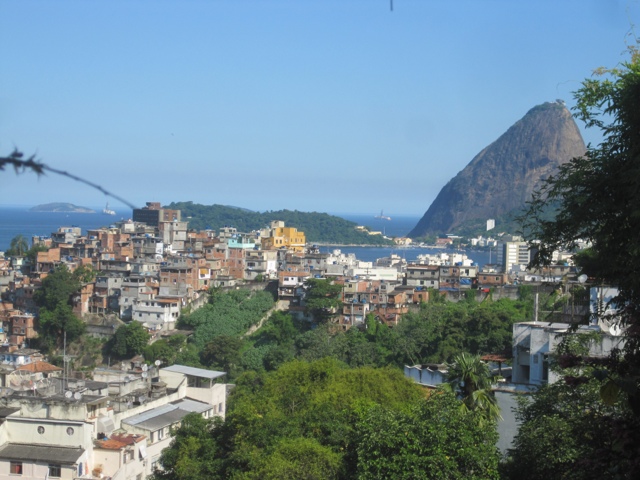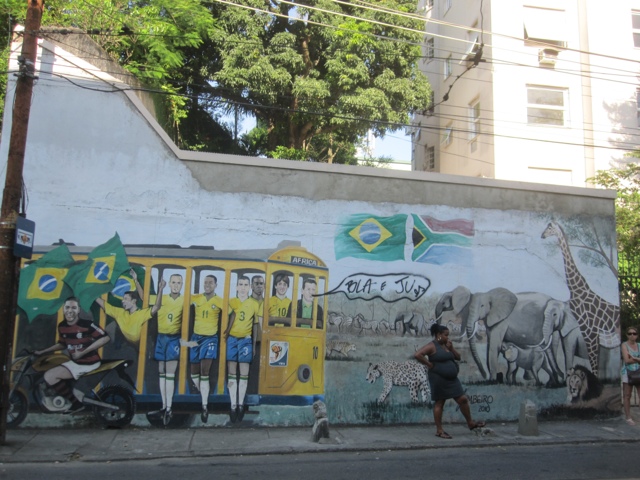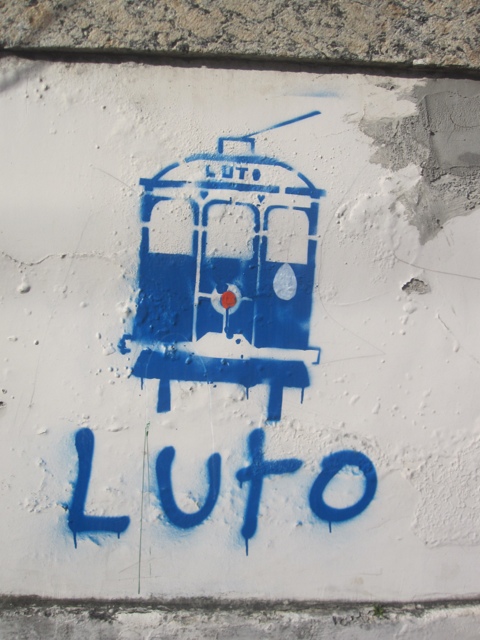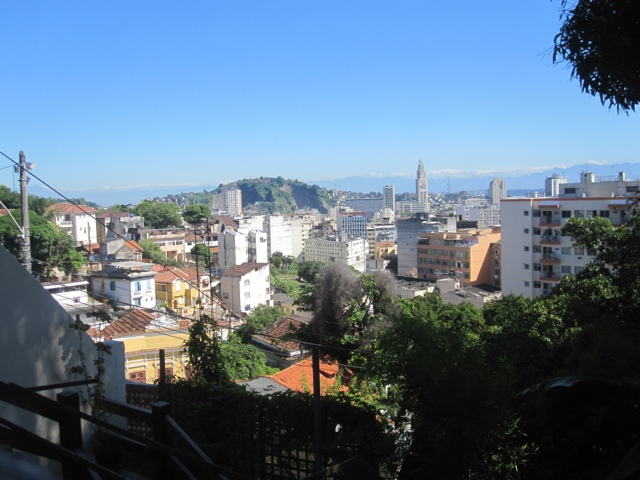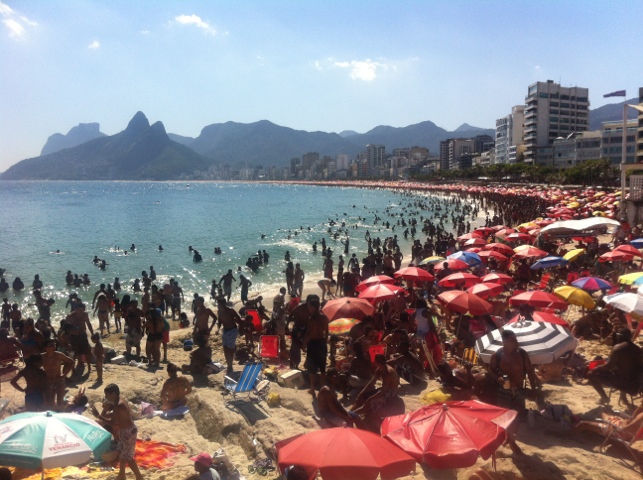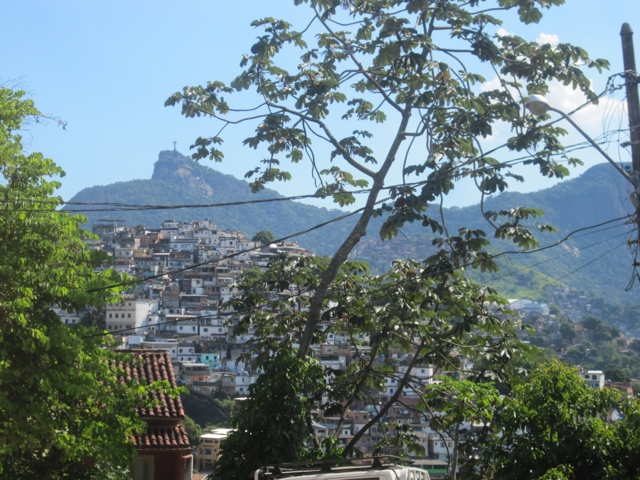I last came to Rio and Brazil on my Gap Year in 2002, and it’s fun coming back and seeing what’s changed. It’s recognisable, but certainly a very different experience this time. For starters, the bus we’re currently on is pumping out 70s disco hits at full volume – something which Roland (who I travelled with last time) would have loved. We’re dancing to YMCA thinking of you, Rol!
Brazil, and particularly Rio, is somewhat infamous for its security. I distinctly remember on our last visit, cars being allowed to go through red traffic lights at night in order to lessen the risk of carjackings, and a series of no-go areas of town outside of the working week. The warnings and perceived risks unfortunately create an edginess that characterised our stay in Rio and means you can’t really let your guard down. On our way from the airport, our taxi driver stopped after a junction, and we looked at each other with growing horror – were we about to be robbed? Well, no – he’d taken a wrong turn, and was just figuring out where to go (answer: reverse down the busy road back to the junction) – but it leaves one feeling uncomfortable.
I remember Rio as a place of huge contrasts; of the gated communities of the wealthy with their residents riding around in tinted cars with armed escorts for fear of kidnapping; and of the neighbouring favelas (slums) with abject poverty just the other side of the walled compound. It’s this wealth gap that fundamentally creates the security problem, and given the huge boom in the Brazilian economy over the past decade, it’s a pretty effective indicator that it certainly hasn’t worked for all of society. The boom certainly has happened though, with things very expensive here for us – we’re paying three times the price we did for accommodation in Asia and really feeling it.
We took a lot of buses in Rio, each one sparkling new and driven at a pace that would put Sandra Bullock to shame, rattling like crazy as we apparently tried desperately to stay above 50. Interestingly, where in Bangkok, the special seats were also reserved for monks, here we found an additional allocation marked for obese people (no joke!). A surprise, perhaps, given the Brazilian reputation for the body beautiful!
Looking for an escape from the tourist melee of the beaches, we stayed in a dorm at the crumbling and basic ‘Villa Leonor’ in the hills of Santa Teresa. The area’s famous for its tram that for years has ferried commuters from the business district of Centro to their houses with views over the city. Unfortunately, the tram is no more, the service indefinitely suspended following a derailment that killed five last summer. Every car and shop window seems to have a weeping logo of the famous yellow tram, with graffiti on the streets saying ‘luto’, or ‘mourning’ next to the image. I’m not sure if they’re mourning the lives lost or the iconic transport that characterised the district, but its absence is certainly obvious.
It was great to stay somewhere quite so untouristic. Although still being very much an enclave for the wealthy with a picturesque vista, it had some real charm and character to it, with fantastic architecture and graffiti murals on the walls depicting the successes of Brazil’s football team. We spent our first night on a terrace at the place we were staying, listening to a great acoustic night that they’d decided to start up following some impromptu entertainment during a power cut the previous week. With the views over a sparkling metropolis, the cool evening air, and gentle renditions of classic songs, who would want to be anywhere else?!
Ok, so we didn’t just stay on a terrace for the whole time we we’re there! We spent a morning visiting the mandatory Christo de Redentor (Christ the Redeemer) statue that stands over the city. The views from the top are stunning (Roland – this time we went when it wasn’t cloudy!), and the statue is itself impressive. Laura had been imagining something truly towering over the city and, I guess dominating the skyline – but at 700m up, it does tend to look a little small from the ground. Nonetheless, spotting it when you’re wandering the streets below is always a fun sight.
We also popped into the Metropolitan Cathedral which is one of those few buildings that gives you a feeling of awe. In part this is because it looks like such a monstrosity from the outside, an upturned concrete rubbish bin, several hundred metres high. From the inside, however, all is revealed, with a single huge open space – a circle, so pretty progressive for a church – and four glorious stained glass windows running from top to bottom, with a cross formed from natural light in the ceiling between. In the evening, we went out to the street party that seems to run continually under the Arcos de Lapa, something I vividly remember also doing a decade ago.
Finally, apparently you can’t go to Rio without visiting the beaches, and so we did – although from a few hundred metres away we regretted doing so on a weekend. We both thought the Spanish Coast was busy – this was just crazy!
We’ve decided to head up north before Carnival, hopefully to find some beaches where there is enough space to have our own patch of sand, and where it is hopefully also a bit cheaper. Getting our bus tickets was a bit of a nightmare (most tourists don’t travel by bus north of Rio, English is rarely spoken), but we’re off to explore – and relax after a hectic week back home and few days here.
Simon



